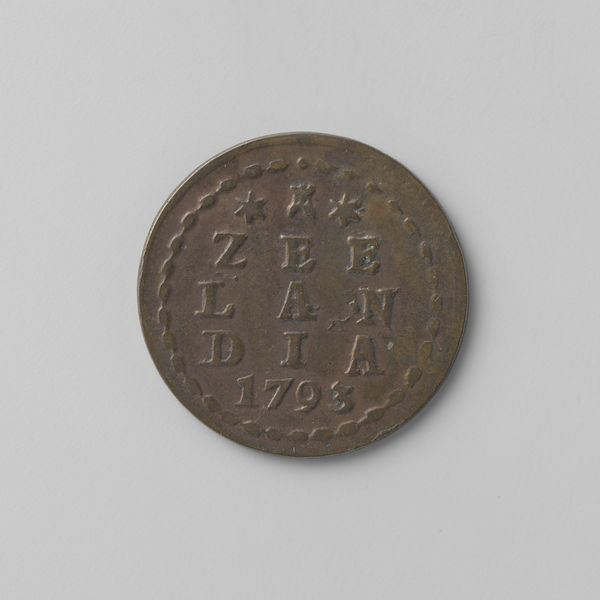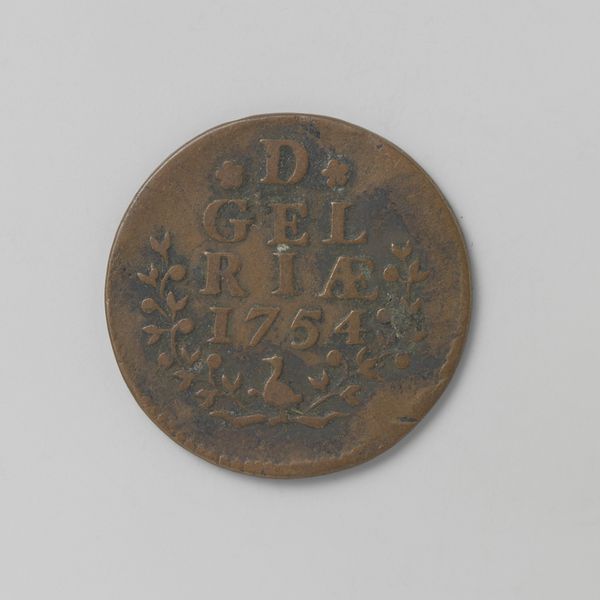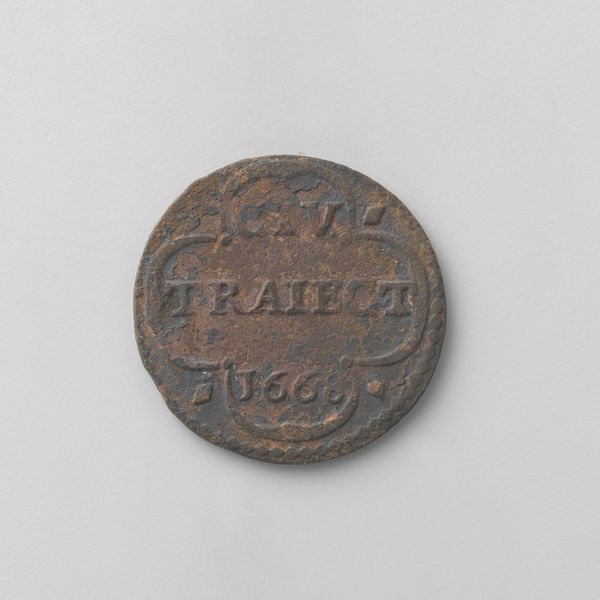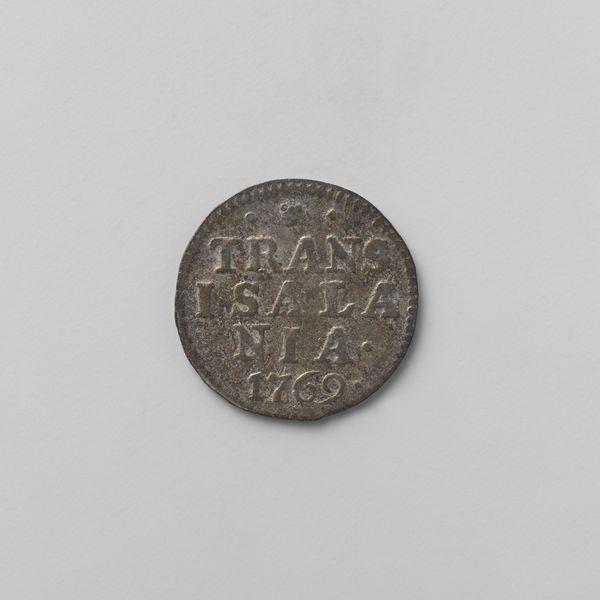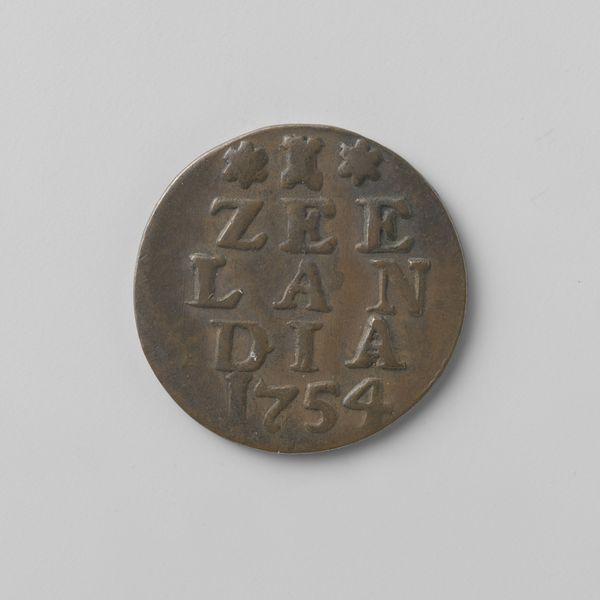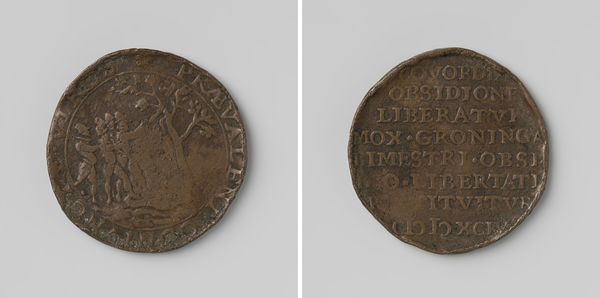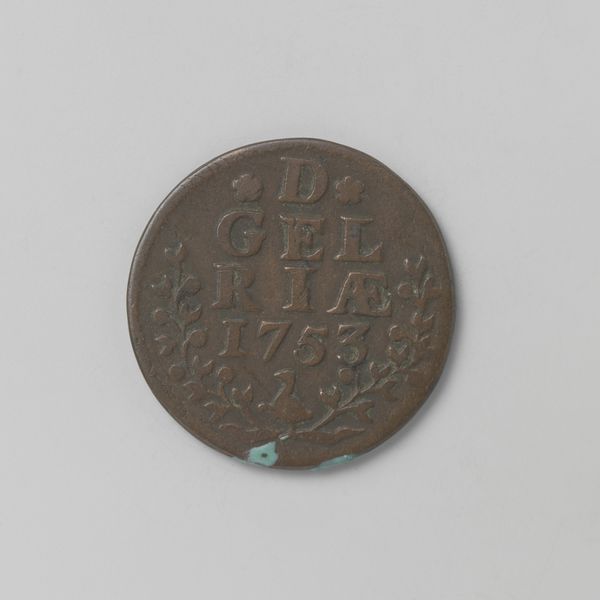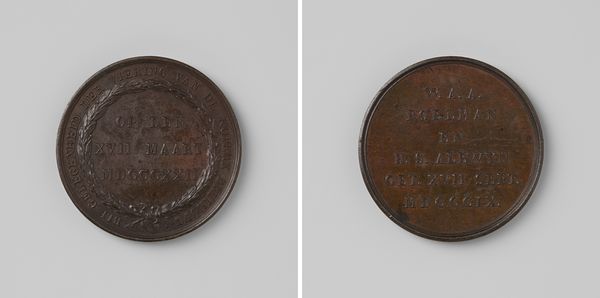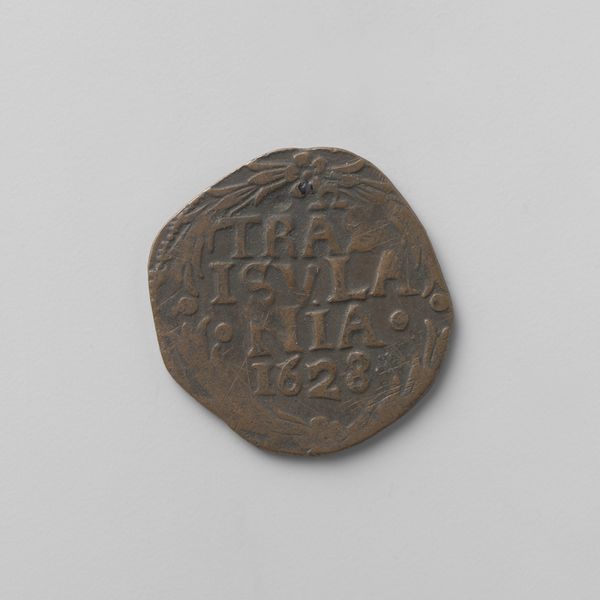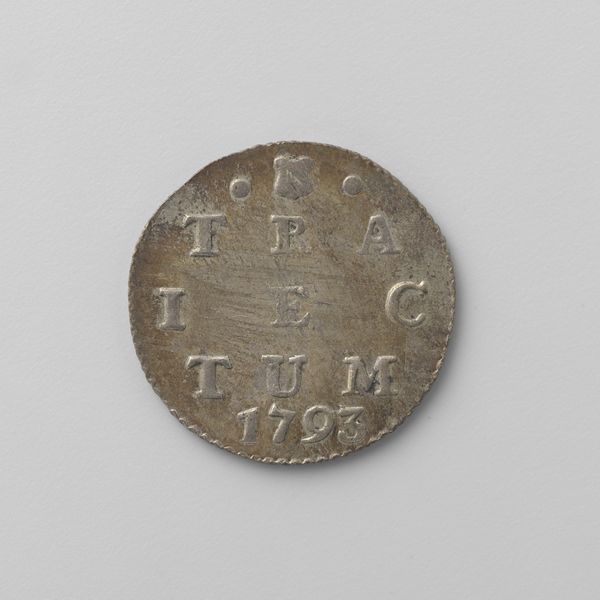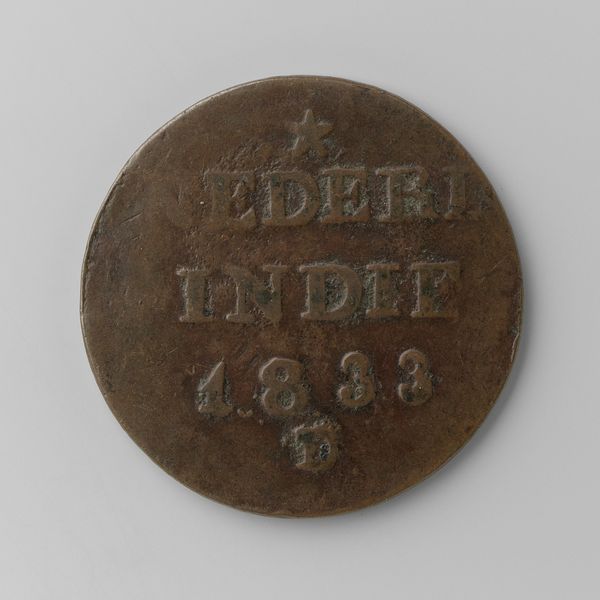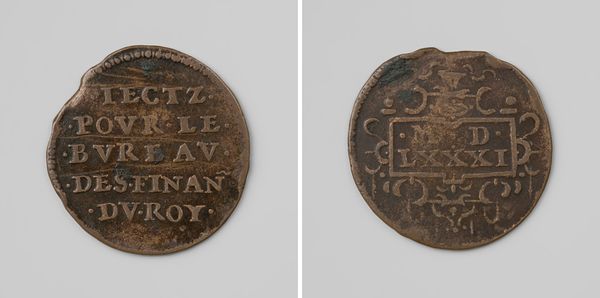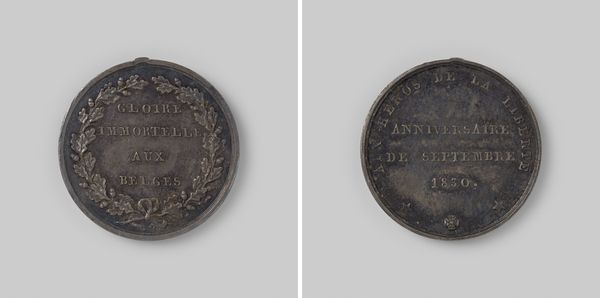![Inscription in a Wreath [reverse] by Hans Schwarz](/_next/image?url=https%3A%2F%2Fd2w8kbdekdi1gv.cloudfront.net%2FeyJidWNrZXQiOiAiYXJ0ZXJhLWltYWdlcy1idWNrZXQiLCAia2V5IjogImFydHdvcmtzLzQ3NzI2Y2U2LTZiOTUtNGQ2NS1hMjkyLTk5MjFkODYzZGQ1Ni80NzcyNmNlNi02Yjk1LTRkNjUtYTI5Mi05OTIxZDg2M2RkNTZfZnVsbC5qcGciLCAiZWRpdHMiOiB7InJlc2l6ZSI6IHsid2lkdGgiOiAxOTIwLCAiaGVpZ2h0IjogMTkyMCwgImZpdCI6ICJpbnNpZGUifX19&w=3840&q=75)
metal, relief, sculpture
#
metal
#
sculpture
#
relief
#
11_renaissance
#
sculpture
#
italian-renaissance
Dimensions: overall (diameter): 4.48 cm (1 3/4 in.) gross weight: 32.46 gr (0.072 lb.) axis: 12:00
Copyright: National Gallery of Art: CC0 1.0
Curator: Here we have a work by Hans Schwarz titled "Inscription in a Wreath [reverse]," created in 1519. It's a metal relief sculpture. What are your first thoughts on it? Editor: There's something both ancient and very deliberate about it. I get a strong sense of monumentality, even though it's relatively small, like holding a piece of history in your hand. The crispness of the lettering against the warm, patinated metal also stands out. Curator: The wreath motif itself connects to a long tradition of symbolic imagery associated with victory, honor, and the classical world, often seen on Roman coins or medallions. Given this reverse inscription, could the medal perhaps be intended for commemorative distribution within a specific societal circle? Editor: Absolutely. Context is key. Given the religious text and the date, it’s quite possible this was commissioned by a religious order, or maybe even a political faction trying to tie itself to divine right, especially during a period of intense religious and political upheaval in Europe. Curator: The use of metal is intriguing too. Bronze, or perhaps another alloy, allows for a permanence but also evokes a sense of wealth and status, indicative of a patron who has access to skilled artisans. How do you see this interacting with power dynamics of the time? Editor: It speaks to a carefully constructed public image, regardless of what side it supported. By investing in the visual rhetoric and aligning themselves with divine concepts, the patron would also likely legitimize their positions within societal power structures. These types of objects always make me wonder how marginalized communities perceived the ideologies of such emblems during times of significant social stratification. Curator: Indeed. The choice of materials, the classical references—it all signals a deliberate engagement with humanist ideas. Its clear artistry shows a nuanced communication across varied societal groups during the Renaissance. It makes one think about the way these objects would communicate authority across time, which we, ourselves, now experience. Editor: It truly illustrates the profound entanglement of art, belief, and power in shaping the historical narrative. Reflecting on our roles, these works encourage ongoing, necessary dialogues regarding inclusivity, equity, and the diverse dimensions of the past.
Comments
No comments
Be the first to comment and join the conversation on the ultimate creative platform.
